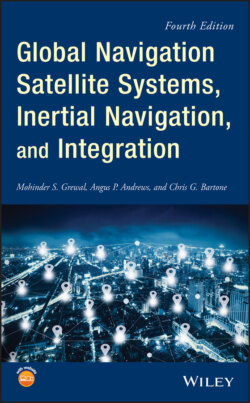Читать книгу Global Navigation Satellite Systems, Inertial Navigation, and Integration - Mohinder S. Grewal - Страница 111
Meridional Radius of Curvature
ОглавлениеThe radius of curvature for north–south motion is called the “meridional” radius of curvature, because north–south travel is along a meridian (i.e. line of constant longitude). For an ellipsoid of revolution, all meridians have the same shape, which is that of the ellipse that was rotated to produce the ellipsoidal surface model. The tangent circle with the same radius of curvature as the ellipse is called the “osculating circle” (osculating means “kissing”). As illustrated in Figure 3.10 for an oblate Earth model, the radius of the meridional osculating circle is smallest where the geocentric radius is largest (at the equator), and the radius of the osculating circle is largest where the geocentric radius is smallest (at the poles). The osculating circle lies inside or on the ellipsoid at the equator and outside or on the ellipsoid at the poles and passes through the ellipsoid surface for latitudes in between.
Figure 3.9 WGS84 geoid heights.
Figure 3.10 Ellipse and osculating circles.
The formula for meridional radius of curvature as a function of geodetic latitude ( is
where is the semimajor axis of the ellipse, is the semiminor axis, and = ( – / is the eccentricity squared.
